How I got my first job at JP Morgan Chase & Co.
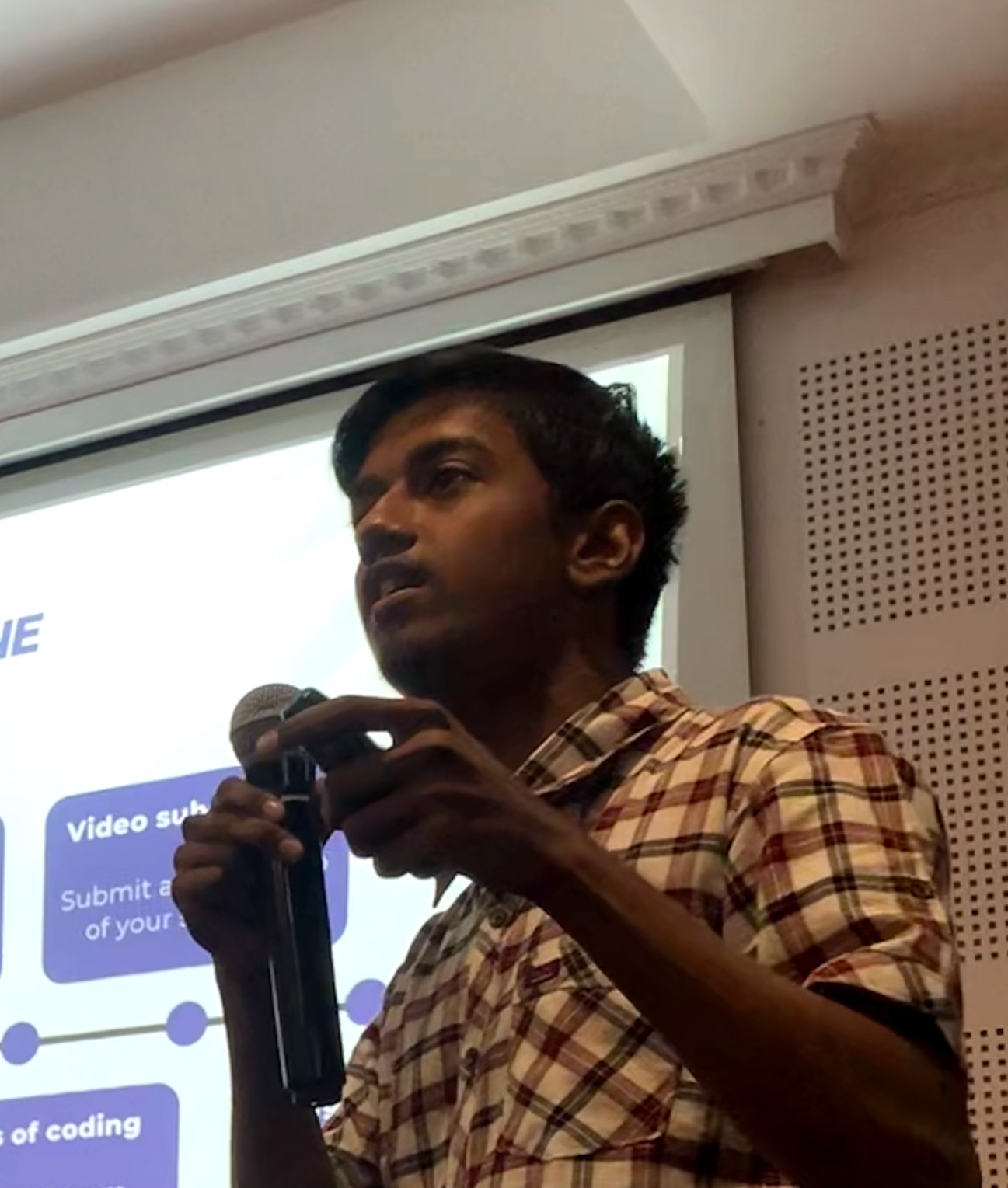 Sreekesh Iyer
Sreekesh Iyer
As an Engineering student in India, getting your first job can be a tough task given the amount of competition you face. In a lot of universities and institutions based in the big cities in India, different companies visit the campus to hire students. One such company in my institute was JP Morgan Chase & Co.
A little bit about myself
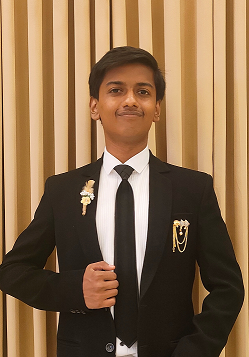
Hi, I'm Sreekesh Iyer, a final-year Engineering student at the University of Mumbai. Being an IT Engineer in the making, I specialize in Full Stack Web Development, Python and DevOps.
Curious as I am, I love to work with different technologies. I also enjoy gaming and cricket.
Campus Recruitment in India

For those unaware, Campus Recruitment is a process in which companies visit the campus of your institute (or virtually sometimes) to hire students. These companies interact with the students beforehand via a pre-placement talk in which they explain what their company does and what they are looking for in their potential new employees.
The applications are usually very high in number. The students are shortlisted based on different eligibility criteria, further on aptitude and coding skills. These students proceed through to the interviews, out of which some get job offers from companies. This process is also interchangeably referred to as Placement or Campus Placement.
Bigger the institution, the higher the possibility of big companies visiting for recruitment.
The students willing to look for better opportunities always have the option to directly apply to companies off-campus.
Software Engineering Program at JP Morgan Chase & Co. India
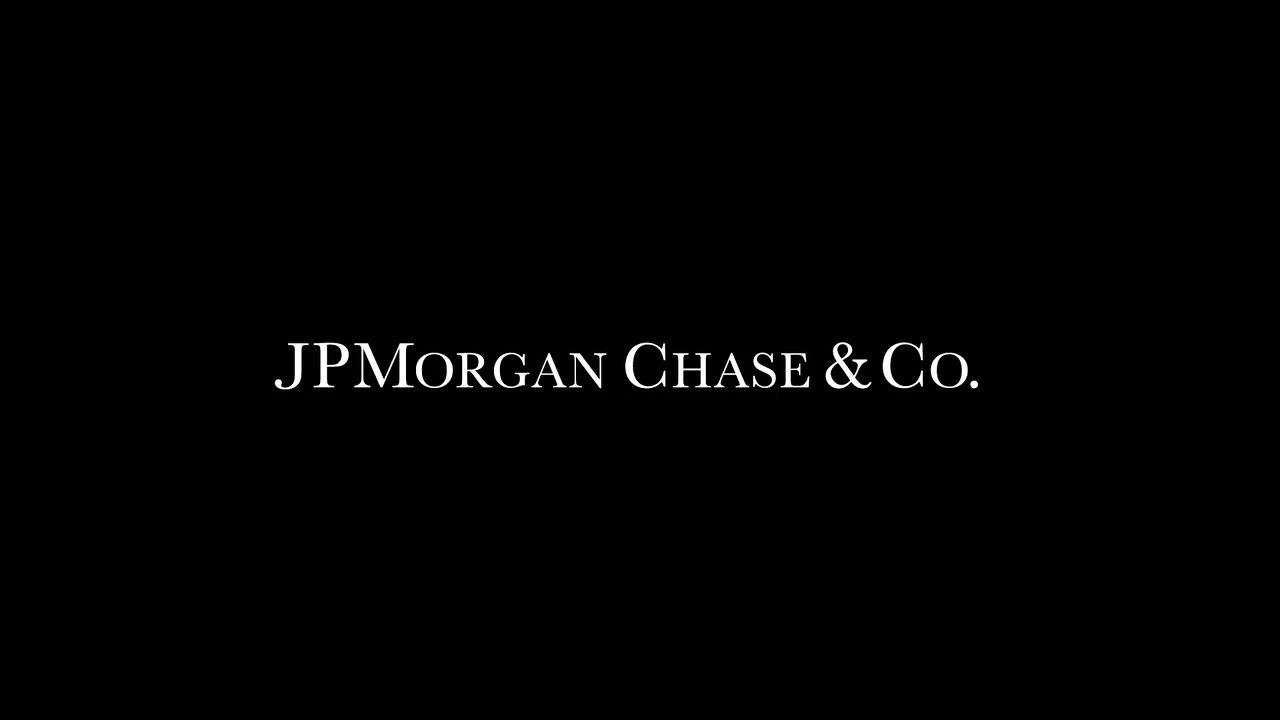
JP Morgan Chase & Co. (further sometimes referred to as JPMC) hires Engineering and MCA (Masters in Computer Applications) graduates from multiple universities and institutes in India via their Software Engineering Program every year.
It is a two-year program in which engineers get to work with their different products and systems and get to learn the core of the functioning of a Fin-Tech giant.
Take a look at the job description for 2023 graduates.
The Process of Recruitment

JPMC starts their recruitment process much earlier as compared to other companies. It started in March this year.
We had a virtual pre-placement talk via their JPMC RoadShow event earlier in March 2022 on Zoom. A lot of senior employees at JPMC talked about their experience, different technologies that they worked with and how the company provides opportunities to a lot of people.
The company shortlists students via these rounds in chronological order:
Coding Round
HR Interview Round
Code For Good Hackathon
Eligibility Criteria:
2023 Graduates
7 CGPA minimum
No Backlogs
Here's a timeline that can make it a little easier to understand.
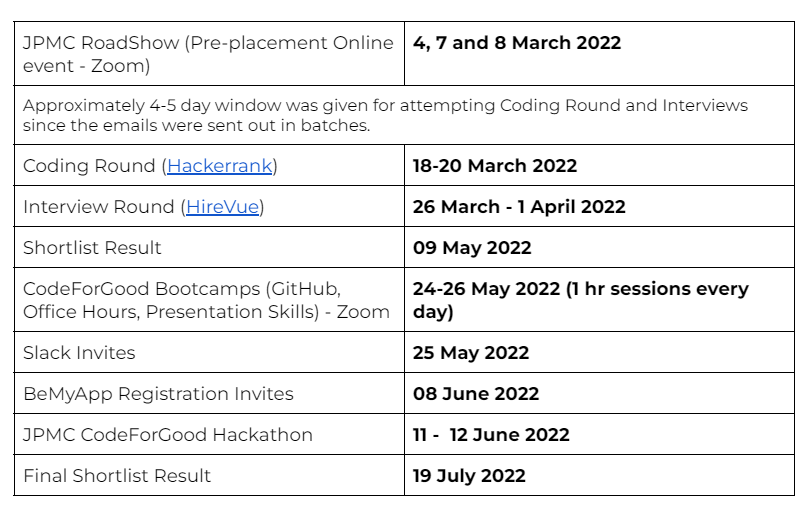
Coding Round | Hackerrank
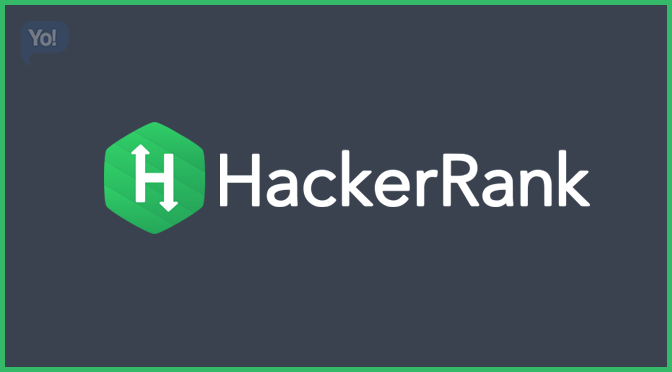
JPMC conducts their Coding Test on the Hackerrank platform. I got an email from JP Morgan’s Hackerrank mailer on 18 March 2022 with the Test link on my registered email address (personal).
The test contained two problems which were of easy-medium Leetcode difficulty level.
Coding Friends | Link to the problem
Selling IDs | Similar Problem, Same Logic
Important things to note:
Your camera has to be switched on at all times.
Hackerrank has strict plagiarism detection software that makes use of M.O.S.S which can easily identify whether your code is original or not.
Interview Round | Hirevue
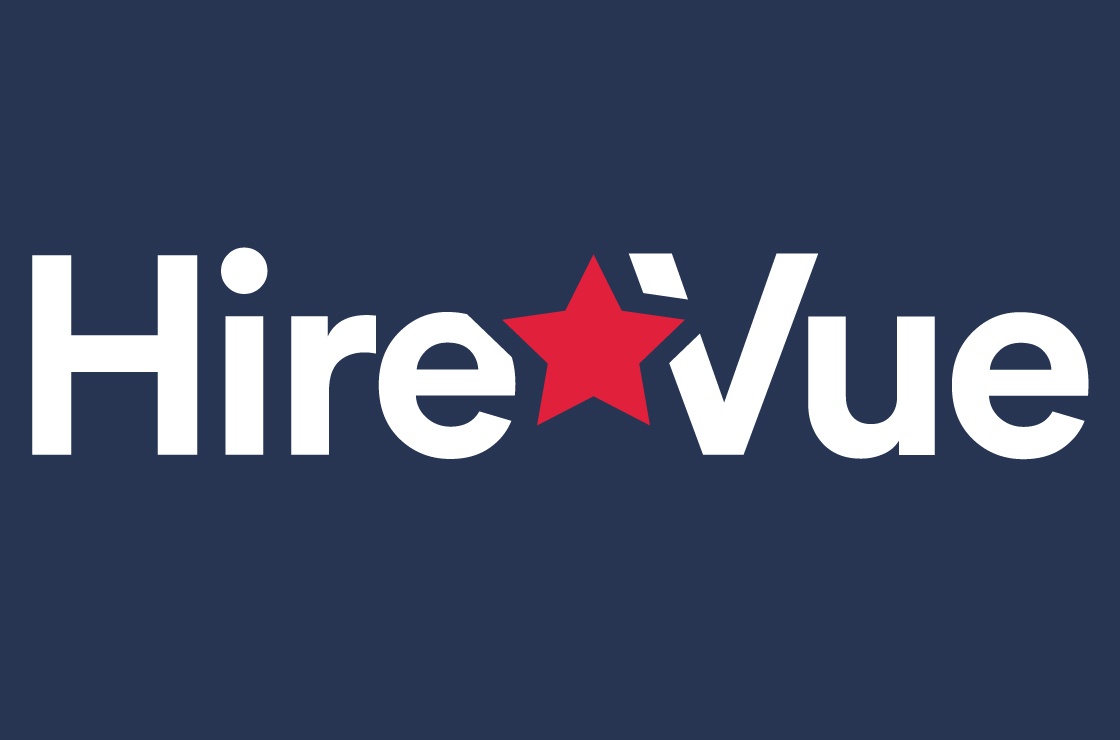
I got an email from interviews@hirevue.com on behalf of JP Morgan Chase on 28th March 2022 stating that the video interview was the next step of the recruitment process. It was internally notified that candidates were shortlisted from the coding round and only those received the link to the interview.
Questions
Tell us about an experience you have had, that you would describe as a learning experience. Tell us about the problem and the outcome.
Tell us about the specific career goals that you have set for yourself.
Important things to note:
This is your only opportunity to interact with the recruiter and make an impression before CFG. Make sure you’re wearing formal clothes, a suit or blazer, dress pants and a tie, pants-suit or dress and jacket is what they recommend.
Sit in a well-lit environment and make sure you can be seen and heard clearly. You’ll get all the required options to test these things out.
You can answer up to 3 practice questions to understand how the platform works. The experience will be pretty much the same as the actual questions, so you can use these questions to maybe warm yourself up.
You only get two attempts to answer a question. You get 30 seconds each to PREPARE for a question, i.e. note something down or think about the answer. This preparation time is only available for the first take. Once you try to attempt a question for the second time, you get only 3 seconds before the recording starts.
Look into the camera as you speak. Try to smile (don’t force yourself though). Be loud and clear about every point you make. Do not hesitate. Practice tongue twisters to avoid muffled words (if you have that problem).
Don’t over-script your answers. Try to be genuine and honest or at least try to make your answers sound natural.
The Final Round | Code For Good

The shortlisted students from the Coding round and the Interview round make it to the final, the Code For Good Hackathon.
What is Code For Good?
Code for Good (CFG) is JPMC's flagship event run as a part of the hiring process for engineers across the globe.
It is a 24-hr hackathon in which students brainstorm a solution for the problems faced by non-profit organizations.
You're aligned to a team with 6-8 other students (entirely random).
Each team is assigned one or two mentors, who may take you on a one-on-one call for a small interview.
You're open to working with any technology with no restrictions.
You get to submit a priority list for choosing a problem statement and you're assigned a problem based on availability.
You get to code for 24 hours, at the end of which your code needs to be pushed to a GitHub repository.
You get a couple of extra hours to make a video presentation in which you explain your approach to solving the problem, a video that can be less than 7 minutes long.
The solution is presented to a Technical Judging Team, where 2 solutions are shortlisted for each problem statement.
The shortlisted teams present their solutions to a Final Judging Team which comprises some of the big names at the company who evaluate your work.
The result of the hackathon is declared in the closing ceremony, later in the day.
I talk about how my team won at Code For Good in detail in this article.
Important things to note:
Most problems won’t require you to use AI or ML, since the NPOs generally require web-based solutions. Hence, you should ideally learn a few frameworks you might use in the hack.
Learning a few popular tech stacks like MERN can come in handy since that’s what a lot of teams end up using. I’d recommend learning React, and Django and working with Databases like MySQL and MongoDB.
Have code templates ready before time, do not spend too much time setting up boilerplate code and the integration between the client and server. Things like these along with authentication are mostly the same regardless of the application you’re making, so try to get these things done before the start of the hackathon so that you can just build on this when you start working on the solution.
Be comfortable speaking with your mentors, they are just like your friends and they want to know you. They won’t be evaluating you all the time. When you’re having a one-on-one conversation with the mentors, be honest when you answer their questions. They’re experienced people and can easily catch your bluff.
Lastly, enjoy the event. The results of this hack do not affect your chances of selection in the company, as your performance is evaluated individually. It is important to have fun, very rarely do we get an opportunity to participate in an event of this magnitude.
Final Shortlist

A month after CFG, on 19 July 2022, the HR from JPMC mailed our Placement Cell Officer with the final shortlist of students who were selected to join the company. I am glad to be a part of that list.
2021 was tough for me. It was mentally challenging, I had put a lot of effort into upskilling myself in various aspects, technical and non-technical. I made a conscious effort in sticking to the process even in times when I did not see results. It took me months to gain confidence in what I have and to take that to the next level. It felt like all of those efforts paid off in one way. It's a little more than "just a job" for me.
My suggestions
Practice problem-solving, it's an important skill to have regardless of the company you're trying to apply.
Your web and app development skills come in handy during CFG.
Your communication skills will be put to a test during the HR Interview. It's a recorded interview, so you need to know how to talk to the camera.
Teamwork and collaboration, your ability to think on your feet, creativity and your raw technical skills will all be tested during the Code For Good Hackathon. What you do at CFG is a result of your work in the last few months/years.
Be professional throughout the process. It takes time, but you have to be patient and proactive. This applies during the HR interview and when interacting with your teammates and/or mentors during CFG.
It is an honour to become a part of such a huge brand. I'm very excited to join the company next year.
Subscribe to my newsletter
Read articles from Sreekesh Iyer directly inside your inbox. Subscribe to the newsletter, and don't miss out.
Written by

Sreekesh Iyer
Sreekesh Iyer
Few interesting things about me: Software Engineer @ JP Morgan Chase & Co. AWS Community Builder 2023 I love working with technology I enjoy playing video games 😄